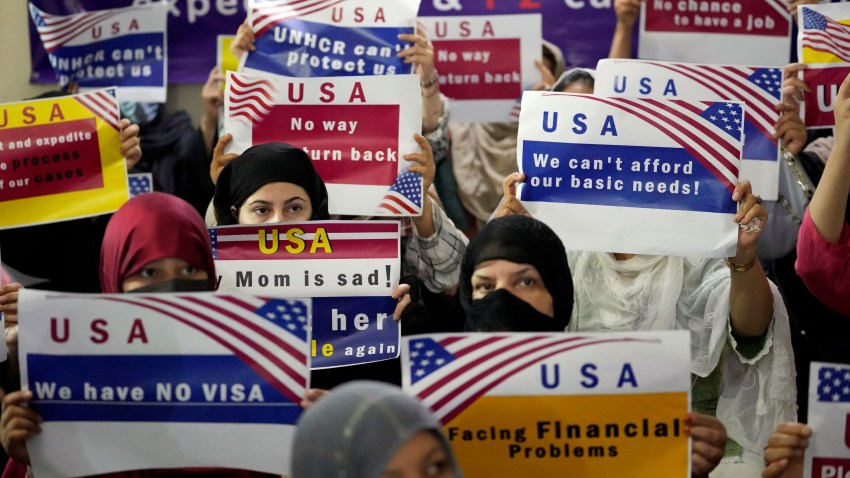The pictures from Afghanistan in August 2021 are indelible: As the Taliban swept through the countryside and stormed Kabul, reclaiming the country from Western-funded elites, the U.S. presence in the country evaporated overnight, and thousands of Afghans tried in desperation to escape the country on the last few U.S. aircraft to leave. Approximately 76,000 escaped in the cargo holds of American planes, the largest humanitarian airlift in recent history.
Compared to many Afghans who remained behind, these escapees were the lucky ones. Six months after the takeover, in February 2022, NPR reported that Afghans felt safer but less hopeful, and that same month a Voice of America poll found that nearly all Afghans said they were suffering. Now, two years after the U.S. evacuation, the majority of Afghans face crushing food insecurity, terror attacks are on the rise, summary executions of the political opposition are rife, and human rights groups are warning of a potential genocide against the Hazara. Women have been largely erased from public life, banned even from working for NGOs, and suicides among women are on the rise. Girls remain largely out of school, and boys who can access education are being indoctrinated in extremist ideology. Therefore, it is little surprise that a significant number of those Afghans who have been able to get a passport, board a flight or cross a border have continued to flee the country in the two years since the U.S. evacuation. In addition to those who got out on the U.S. airlift, an additional 9,000 or so have made their way to the United States since then.
Even those who have escaped Taliban rule face numerous hurdles. The vast majority of the 1.6 million Afghans who have left the country since 2021 did not do so on U.S. flights but by crossing land borders to Pakistan, Iran or Tajikistan. There they may languish in refugee camps for years before their asylum applications to the U.S. or other countries are even processed. In Pakistan, refugee cards are now expiring and some are being deported back to the Taliban. Many of those who did get out on flights out rather than by land routes have ended up flying not to the U.S. but the Middle East, Turkey or Africa. In recent years, many leaving by air have flown to Brazil with a view to taking the perilous journey north to America through the treacherous Darien Gap.

